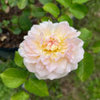New Dawn Deformity
hup2345
14 years ago
Related Stories

ARCHITECTURETell a Story With Design for a More Meaningful Home
Go beyond a home's bones to find the narrative at its heart, for a more rewarding experience
Full Story
REMODELING GUIDESHow to Keep Your Home's Beautiful Glass Sparkling Clean
A few simple tools and tricks keep water spots and soapy film at bay
Full Story






lilgreenfrog
hartwood
Related Discussions
New Gulf Frit with deformities?
Q
New to Hydrangea- Damaged Deformed Foliage
Q
IDing zone 4 or 5 by New Dawn performance? Anyone else with New Dawn?
Q
white markings? and deformed new growth on hippeastrum
Q
reg_pnw7
michaelg
hup2345Original Author
dublinbay z6 (KS)
york_rose
charleney
michaelg
buford
hup2345Original Author
mad_gallica (z5 Eastern NY)
michaelg
henry_kuska
henry_kuska
york_rose
henry_kuska
hup2345Original Author